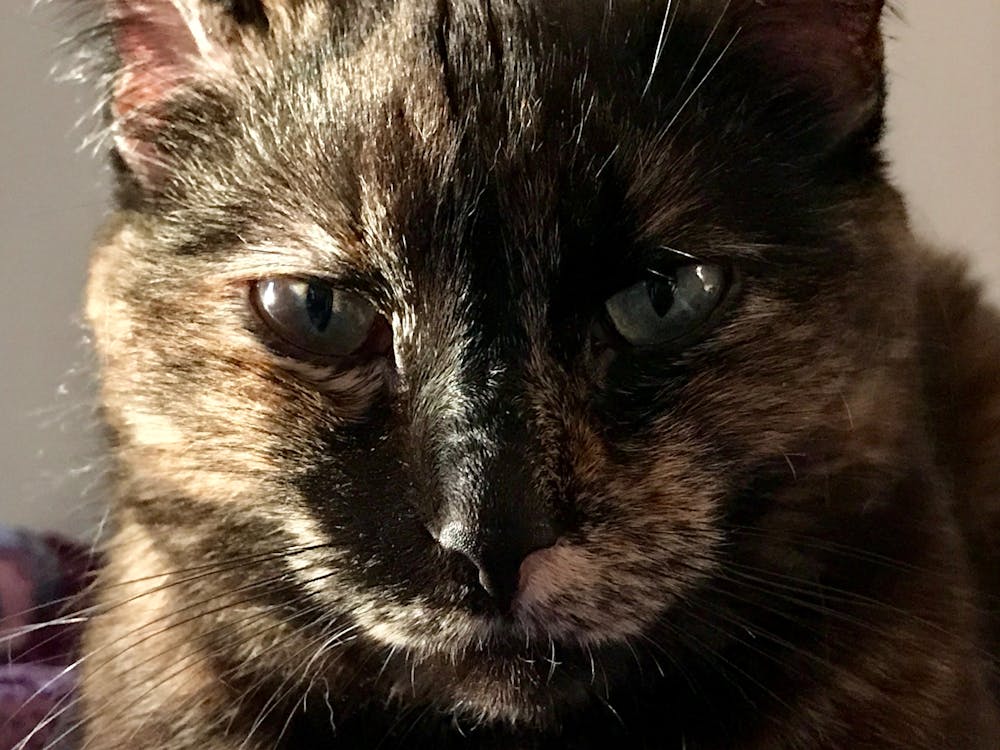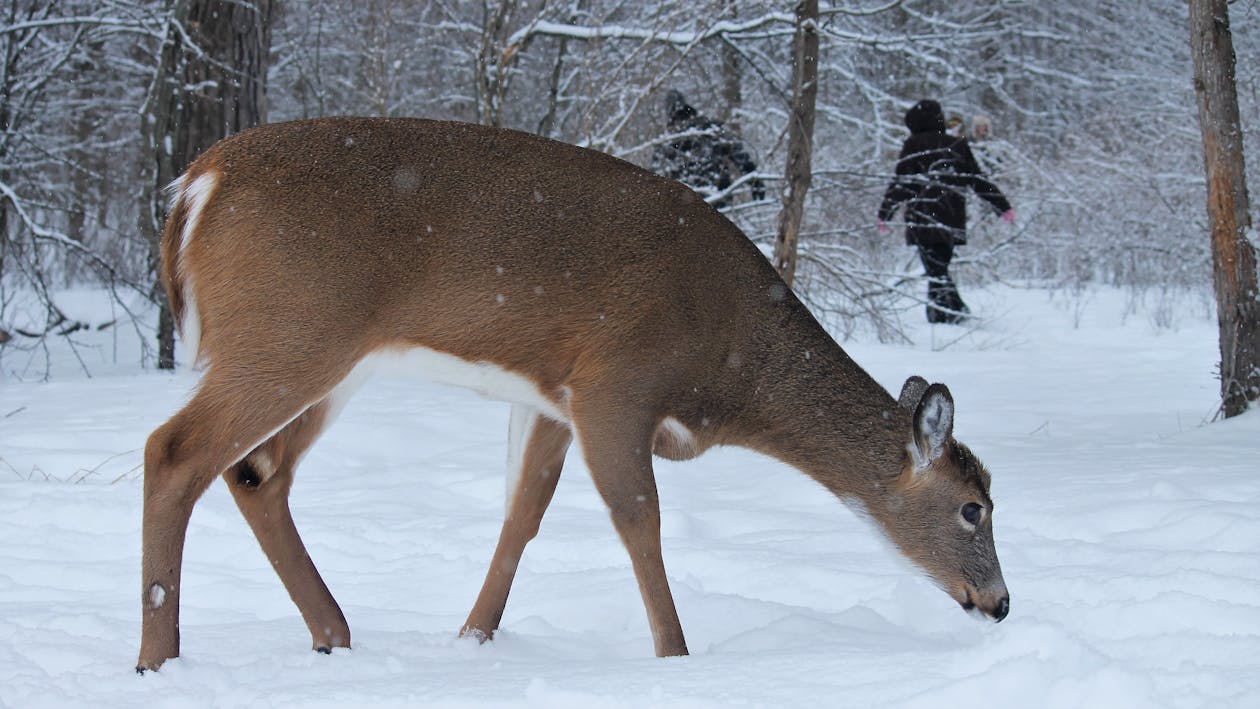Can Dogs Eat Dry Cat Food? Discover the potential risks and benefits of feeding your dog cat food. FOODS.EDU.VN provides expert insights and guidance to help you make informed decisions about your pet’s nutrition. Explore safer alternatives and learn how to keep your canine companion healthy and happy with balanced diets and nutritional advice.
1. Understanding the Nutritional Differences Between Dog Food and Cat Food
While both dog and cat food might seem similar at a glance, their nutritional compositions are distinctly different, tailored to meet the specific dietary needs of each species. Understanding these differences is crucial for ensuring your pet receives the proper nutrition. Let’s delve into a detailed comparison of dog and cat food, highlighting key nutrients and dietary requirements that set them apart. For comprehensive insights into pet nutrition, visit FOODS.EDU.VN and explore our extensive library of articles and guides.
1.1. Macronutrient Imbalance: Protein, Fat, and Carbohydrates
The most significant difference between dog and cat food lies in the proportions of macronutrients: protein, fat, and carbohydrates. Cats, being obligate carnivores, require a diet high in protein and fat to thrive. Here’s a breakdown:
- Protein: Cat food typically contains significantly higher levels of protein than dog food. Adult cats need a minimum of 26% protein, whereas adult dogs require only 18%.
- Fat: Cat food also boasts a higher fat content. The minimum fat requirement for adult cats is 9%, compared to 5.5% for adult dogs.
- Carbohydrates: Dog food generally contains more carbohydrates than cat food. Dogs can digest and utilize carbohydrates for energy more efficiently than cats.
This table summarizes the key macronutrient differences:
| Nutrient | Adult Dogs (AAFCO Minimum) | Adult Cats (AAFCO Minimum) |
|---|---|---|
| Protein (%) | 18 | 26 |
| Fat (%) | 5.5 | 9 |
| Carbohydrates | Higher | Lower |







1.2. Essential Amino Acids: Taurine and Arachidonic Acid
Cats require specific amino acids that are not always sufficiently provided in dog food. Two critical examples are taurine and arachidonic acid:
- Taurine: Cats need taurine to support heart function, vision, and reproduction. Dog food often lacks sufficient taurine because dogs can synthesize it from other amino acids, while cats cannot.
- Arachidonic Acid: This is an essential omega-6 fatty acid for cats, crucial for various physiological functions. Dogs can convert linoleic acid into arachidonic acid, but cats cannot, making it necessary to include it directly in their diet.
The following table highlights the minimum requirements for these amino acids:
| Nutrient | Adult Dogs (AAFCO Minimum) | Adult Cats (AAFCO Minimum) |
|---|---|---|
| Taurine | 0 | 0.1% (dry), 0.2% (canned) |
| Arachidonic Acid | 0 | 0.02% |
1.3. Vitamin and Mineral Variations: Vitamin A and Calcium
Vitamins and minerals are essential for overall health, and the requirements vary between dogs and cats:
- Vitamin A: Cats need higher levels of Vitamin A because they cannot convert beta-carotene (found in plants) into Vitamin A as efficiently as dogs.
- Calcium: Both dogs and cats need calcium for bone health, but the required amounts differ slightly.
Here’s a quick comparison of the minimum requirements:
| Nutrient | Adult Dogs (AAFCO Minimum) | Adult Cats (AAFCO Minimum) |
|---|---|---|
| Vitamin A | 5,000 IU/kg | 3,332 IU/kg |
| Calcium (%) | 0.5 | 0.6 |
1.4. Obligate Carnivores vs. Omnivores: Understanding Dietary Needs
The fundamental difference in nutritional needs stems from the biological classification of each species:
- Cats as Obligate Carnivores: Cats are obligate carnivores, meaning their bodies are designed to derive nutrients primarily from animal sources. They have shorter digestive tracts and specific enzyme systems optimized for processing meat.
- Dogs as Omnivores: Dogs are omnivores and can obtain nutrients from both animal and plant sources. They have longer digestive tracts and can efficiently digest carbohydrates.
This distinction is critical because it influences the types of foods that are most beneficial for each species. Cats require high levels of animal-based protein and specific nutrients like taurine and arachidonic acid, which are not as crucial for dogs.
To gain a deeper understanding of these nutritional differences and how they impact your pet’s health, visit FOODS.EDU.VN. Our platform offers a wealth of resources, including detailed articles, expert advice, and nutritional guides tailored to both dogs and cats. Stay informed and ensure your pets receive the best possible care by exploring our comprehensive content.
2. The Potential Dangers of Dogs Eating Dry Cat Food
While a small nibble of cat food might not immediately harm your dog, regularly consuming it can lead to several health issues. Cat food is formulated to meet the unique nutritional needs of cats, which differ significantly from those of dogs. When dogs eat cat food, they risk imbalances in their diet, which can result in both short-term discomfort and long-term health problems. Let’s explore the potential dangers in detail. For more insights into pet health and nutrition, visit FOODS.EDU.VN and consult our expert-reviewed articles.
2.1. Gastrointestinal Upset: Vomiting and Diarrhea
One of the most common immediate reactions to a dog eating cat food is gastrointestinal upset. Cat food is richer in fat and protein than dog food, which can overwhelm a dog’s digestive system.
- High Fat Content: The increased fat content can cause inflammation in the digestive tract, leading to vomiting and diarrhea.
- Protein Overload: Dogs not accustomed to high protein levels may experience digestive issues as their system struggles to process the excess protein.
Symptoms of gastrointestinal upset include:
- Vomiting
- Diarrhea
- Loss of appetite
- Abdominal pain
- Lethargy
2.2. Pancreatitis: Inflammation of the Pancreas
Pancreatitis, or inflammation of the pancreas, is a serious concern when dogs consume high-fat diets. The pancreas is responsible for producing enzymes that aid in digestion, and a sudden influx of fat can cause it to overwork and become inflamed.
- Risk Factors: Dogs with a history of pancreatitis or those prone to digestive sensitivities are at higher risk.
- Symptoms: Symptoms of pancreatitis include severe abdominal pain, vomiting, diarrhea, fever, and dehydration. In severe cases, pancreatitis can be life-threatening.
The following table outlines the key symptoms of pancreatitis:
| Symptom | Description |
|---|---|
| Abdominal Pain | Severe pain in the abdomen, often causing the dog to be hunched over or reluctant to move. |
| Vomiting | Frequent and forceful expulsion of stomach contents. |
| Diarrhea | Loose, watery stools, often accompanied by blood. |
| Fever | Elevated body temperature, indicating inflammation. |
| Dehydration | Loss of fluids, leading to dry gums, sunken eyes, and decreased skin elasticity. |
| Loss of Appetite | Refusal to eat, even favorite foods. |
| Lethargy | Decreased energy levels and overall sluggishness. |
2.3. Obesity and Weight Gain
Regularly eating cat food can contribute to obesity in dogs due to its higher calorie and fat content.
- Calorie Density: Cat food is more calorie-dense than dog food, meaning a smaller amount contains more calories.
- Metabolic Imbalance: The higher fat content can disrupt a dog’s metabolism, leading to weight gain and obesity-related health issues.
Obesity in dogs can lead to:
- Joint problems (arthritis)
- Diabetes
- Heart disease
- Reduced lifespan
2.4. Nutritional Imbalances Over Time
While occasional consumption of cat food might not cause immediate harm, long-term nutritional imbalances can develop if dogs consistently eat cat food.
- Excessive Protein Intake: High protein intake can strain the kidneys over time.
- Inadequate Calcium-to-Phosphorus Ratio: Imbalances in these minerals can affect bone health.
- Deficiency in Essential Nutrients: Dog food is formulated to provide the correct balance of vitamins and minerals for dogs, which cat food lacks.
2.5. Allergic Reactions
While less common, some dogs may be allergic to ingredients commonly found in cat food. Allergic reactions can manifest as:
- Skin irritation (itching, redness, hives)
- Digestive upset (vomiting, diarrhea)
- Respiratory issues (coughing, sneezing)
2.6. Risk to Dogs with Specific Health Conditions
Certain dogs are more vulnerable to the adverse effects of eating cat food:
- Dogs with Kidney Issues: High protein content can worsen kidney function.
- Dogs with Liver Disease: High fat content can exacerbate liver problems.
- Dogs with Pancreatitis History: They are at higher risk of recurrent pancreatitis.
Understanding these potential dangers is crucial for responsible pet ownership. To ensure your dog’s health and well-being, stick to high-quality dog food formulated to meet their specific nutritional needs. For further information and expert advice, visit FOODS.EDU.VN, where you can find a wealth of resources on pet nutrition and health.
3. When is Cat Food Okay for Dogs: Exceptions and Considerations
While it’s generally not advisable, there are limited circumstances where a veterinarian might recommend cat food for a dog. These situations are rare and typically involve specific health conditions that necessitate a short-term dietary adjustment. It’s crucial to consult with your vet before making any changes to your dog’s diet. FOODS.EDU.VN offers a range of resources to help you understand your pet’s nutritional needs, but always prioritize professional veterinary advice.
3.1. Veterinary Recommendations for Specific Health Conditions
In some cases, a veterinarian may prescribe cat food for dogs with particular health issues. Here are a few scenarios:
- Recovery from Surgery or Illness: If a dog needs a temporary boost in calories and protein to recover from surgery or illness, a vet might suggest small amounts of cat food.
- Appetite Stimulation: For dogs with a poor appetite, the stronger flavors and higher fat content of cat food can sometimes stimulate them to eat.
- Specific Dietary Deficiencies: Rarely, if a dog has a specific nutrient deficiency that is better addressed with the formulation of cat food, a vet might recommend it temporarily.
3.2. Short-Term Emergency Situations
If you’re in a pinch and run out of dog food, cat food can serve as a temporary solution. However, it should only be used for a very short period (e.g., one or two meals) and not as a regular replacement.
- Traveling or Unexpected Circumstances: If you’re traveling or find yourself in an unexpected situation where dog food isn’t readily available, cat food is a better option than letting your dog go hungry.
- Minimizing Risks: When using cat food in an emergency, give a smaller portion than you usually would to avoid digestive upset.
3.3. Senior Dogs with Decreased Appetite
Some senior dogs experience a decline in appetite due to age-related issues. In such cases, the higher palatability and calorie density of cat food might encourage them to eat.
- Nutritional Considerations: If using cat food for senior dogs, monitor their weight and overall health closely. Consult with your vet to ensure they’re still getting a balanced diet.
- Supplementation: Your vet may recommend supplements to balance out any nutritional deficiencies that may arise from long-term cat food consumption.
3.4. Potential Benefits of Specific Nutrients in Cat Food
In certain situations, the specific nutrients found in cat food might offer temporary benefits:
- High Protein for Muscle Support: The higher protein content can help support muscle mass in dogs recovering from illness or surgery.
- Increased Fat for Energy: The higher fat content provides a concentrated source of energy for dogs with increased energy demands.
However, these benefits should be weighed against the risks of nutritional imbalances and other health issues.
3.5. Risks to Mitigate When Feeding Cat Food to Dogs
If you must feed cat food to your dog, be aware of the risks and take steps to mitigate them:
- Portion Control: Feed smaller portions to avoid digestive upset and weight gain.
- Monitor for Adverse Reactions: Watch for signs of vomiting, diarrhea, or other digestive issues.
- Consult Your Veterinarian: Get professional advice on how to balance your dog’s diet and address any potential deficiencies.
Here’s a table summarizing the potential risks and mitigations:
| Risk | Mitigation |
|---|---|
| Digestive Upset | Feed smaller portions; mix with regular dog food. |
| Weight Gain | Monitor calorie intake; adjust portion sizes. |
| Nutritional Imbalances | Consult with a veterinarian for supplement recommendations. |
| Exacerbation of Conditions | Avoid if the dog has kidney, liver, or pancreatic issues; consult your veterinarian. |
In conclusion, while there are limited circumstances where cat food might be acceptable for dogs, it’s crucial to approach this with caution and under the guidance of a veterinarian. Prioritize a balanced and appropriate diet designed specifically for dogs to ensure their long-term health and well-being. Visit FOODS.EDU.VN for more information on pet nutrition and to find resources that help you make informed decisions about your dog’s diet.
4. Practical Strategies to Prevent Dogs from Eating Cat Food
Preventing your dog from eating cat food is crucial for maintaining their health and ensuring they receive a balanced diet tailored to their needs. Implementing practical strategies can help manage this common issue in households with both dogs and cats. Let’s explore effective ways to keep your dog away from the cat’s food. For additional tips and advice on pet care, visit FOODS.EDU.VN and browse our expert-authored articles.
4.1. Separate Feeding Areas
One of the most effective strategies is to create separate feeding areas for your dog and cat.
- Designated Spaces: Feed your cat in a location that is inaccessible to your dog, such as a high countertop, a separate room, or a cat-only zone.
- Physical Barriers: Use baby gates or pet-proof barriers to keep your dog out of the cat’s feeding area.
4.2. Elevated Feeding Stations
Elevated feeding stations can be a game-changer, especially for larger dogs.
- Wall-Mounted Feeders: Install a wall-mounted cat feeder that is high enough for the cat to access but out of the dog’s reach.
- Cat Trees with Feeding Platforms: Utilize cat trees with built-in feeding platforms that provide a secure and elevated dining spot for your cat.
4.3. Timed Feeding Schedules
Timed feeding schedules can help prevent your dog from scavenging leftover cat food.
- Supervised Meal Times: Feed your cat at specific times and supervise the meal to ensure they finish their food. Remove any uneaten food promptly.
- Consistent Routines: Establish consistent feeding routines to help your pets understand when and where they will be fed.
4.4. Puzzle Feeders for Dogs
Keep your dog engaged and occupied during the cat’s feeding time with puzzle feeders.
- Mental Stimulation: Puzzle feeders provide mental stimulation and keep your dog focused on their own food, reducing the temptation to steal from the cat.
- Distraction Techniques: Use interactive toys or chew toys to distract your dog while the cat is eating.
4.5. Training and Command Reinforcement
Training your dog with specific commands can help reinforce boundaries and prevent them from accessing cat food.
- “Leave It” Command: Teach your dog the “leave it” command to discourage them from approaching the cat’s food.
- Positive Reinforcement: Use positive reinforcement techniques, such as treats and praise, to reward your dog for obeying commands.
4.6. Cat-Proof Food Bowls
Invest in cat-proof food bowls that make it difficult for dogs to access the food.
- Microchip Feeders: These feeders only open for the cat whose microchip is registered with the device.
- Covered Bowls: Use bowls with a cover or lid that the cat can easily access but that prevents the dog from getting in.
4.7. Monitoring and Supervision
Consistent monitoring and supervision are essential, especially when introducing new strategies.
- Observe Interactions: Watch how your dog and cat interact during feeding times to identify potential issues.
- Adjust Strategies: Be prepared to adjust your strategies as needed based on your pets’ behavior and habits.
Here’s a table summarizing these practical strategies:
| Strategy | Description |
|---|---|
| Separate Feeding Areas | Designate specific, inaccessible spaces for the cat’s meals. |
| Elevated Feeding Stations | Use high countertops or wall-mounted feeders out of the dog’s reach. |
| Timed Feeding Schedules | Feed the cat at specific times, supervise the meal, and remove leftovers. |
| Puzzle Feeders for Dogs | Keep the dog engaged with puzzle feeders or interactive toys during the cat’s feeding time. |
| Training and Command | Reinforce “leave it” command and reward the dog for obeying. |
| Cat-Proof Food Bowls | Utilize microchip feeders or covered bowls to restrict the dog’s access. |
| Monitoring and Supervision | Observe feeding times and adjust strategies as needed. |
By implementing these strategies consistently, you can effectively prevent your dog from eating cat food, ensuring they receive a balanced diet and maintain optimal health. For more expert advice and resources on pet care, visit FOODS.EDU.VN today.
5. Safer Alternatives to Cat Food for Dogs
If you’re looking for ways to supplement your dog’s diet or provide a tastier alternative without resorting to cat food, several safer options can provide the necessary nutrients and appeal to their palate. It’s essential to prioritize a balanced and appropriate diet for your dog’s specific needs. Let’s explore some safer alternatives. For detailed nutritional guides and expert advice, visit FOODS.EDU.VN and enhance your understanding of pet nutrition.
5.1. High-Quality Dog Food Brands
Choosing a high-quality dog food brand is the foundation of a healthy diet for your canine companion.
- Nutrient-Rich Formulas: Look for dog foods that are rich in essential nutrients, vitamins, and minerals.
- Vet-Recommended Brands: Consider vet-recommended brands like Royal Canin, Hill’s Science Diet, and Purina Pro Plan, known for their balanced nutrition.
5.2. Homemade Dog Treats
Homemade dog treats can be a healthy and delicious alternative, allowing you to control the ingredients and ensure they are safe for your dog.
- Simple Recipes: Try simple recipes using ingredients like pumpkin, sweet potato, oats, and lean meats.
- Avoid Harmful Ingredients: Ensure the treats are free from harmful ingredients like chocolate, grapes, onions, and excessive salt.
5.3. Lean Protein Sources
Supplementing your dog’s diet with lean protein sources can provide the necessary amino acids without the excess fat found in cat food.
- Cooked Chicken or Turkey: Boiled, skinless chicken or turkey is a great option.
- Eggs: Cooked eggs are a good source of protein and essential nutrients.
- Plain Greek Yogurt: Offers protein and probiotics for digestive health.
5.4. Vegetables and Fruits
Adding certain vegetables and fruits to your dog’s diet can provide essential vitamins, minerals, and fiber.
- Carrots: Offer beta-carotene and fiber.
- Sweet Potatoes: Provide vitamins A and C, and fiber.
- Blueberries: Rich in antioxidants.
- Green Beans: Low-calorie and high in fiber.
5.5. Dog-Specific Supplements
If your dog needs additional nutrients, consider dog-specific supplements to address any deficiencies.
- Omega-3 Fatty Acids: Supports skin and coat health.
- Probiotics: Promotes digestive health.
- Multivitamins: Provides a range of essential vitamins and minerals.
5.6. Limited Ingredient Diets
For dogs with allergies or sensitivities, limited ingredient diets can help identify and avoid potential triggers.
- Single Protein Source: Look for diets with a single animal protein source.
- Minimal Additives: Choose foods with minimal additives, fillers, and artificial ingredients.
5.7. Vet-Prescribed Therapeutic Diets
If your dog has specific health conditions, your veterinarian may prescribe a therapeutic diet to address their unique needs.
- Kidney Support Diets: Low in protein and phosphorus.
- Liver Support Diets: Moderate in protein and fat, with added nutrients.
- Gastrointestinal Diets: Easily digestible and low in fiber.
Here’s a table summarizing these safer alternatives:
| Alternative | Description |
|---|---|
| High-Quality Dog Food | Vet-recommended brands rich in essential nutrients like Royal Canin, Hill’s Science Diet, and Purina Pro Plan. |
| Homemade Dog Treats | Simple recipes using safe ingredients like pumpkin, sweet potato, and oats, avoiding harmful substances. |
| Lean Protein Sources | Cooked chicken, turkey, eggs, and plain Greek yogurt to provide necessary amino acids without excess fat. |
| Vegetables and Fruits | Carrots, sweet potatoes, blueberries, and green beans for essential vitamins, minerals, and fiber. |
| Dog-Specific Supplements | Omega-3 fatty acids, probiotics, and multivitamins to address specific nutrient deficiencies. |
| Limited Ingredient Diets | Single protein source and minimal additives for dogs with allergies or sensitivities. |
| Vet-Prescribed Diets | Therapeutic diets for specific health conditions, such as kidney, liver, or gastrointestinal support. |
By incorporating these safer alternatives into your dog’s diet, you can ensure they receive the necessary nutrients and enjoy a variety of flavors without the risks associated with cat food. Visit FOODS.EDU.VN for more in-depth guides and resources on dog nutrition, and consult with your veterinarian to tailor a diet that meets your dog’s individual needs.
6. Understanding the Role of Pet Food Labels
Pet food labels provide crucial information about the nutritional content and ingredients of the food you are feeding your dog or cat. Learning how to decipher these labels can help you make informed decisions about your pet’s diet and overall health. Let’s explore the key components of pet food labels and how to interpret them effectively. For more insights into pet nutrition and label reading, visit FOODS.EDU.VN.
6.1. Key Components of a Pet Food Label
Understanding the different sections of a pet food label is essential for assessing the quality and suitability of the food for your pet. Here are the main components:
- Product Name: The product name indicates what the food is and may provide clues about the ingredients.
- Net Weight or Volume: This tells you how much food is in the package.
- Guaranteed Analysis: This section lists the minimum percentages of crude protein and crude fat, and the maximum percentages of crude fiber and moisture.
- Ingredient List: Ingredients are listed in descending order by weight.
- Nutritional Adequacy Statement: This statement indicates whether the food is complete and balanced for a particular life stage, based on AAFCO (Association of American Feed Control Officials) guidelines.
- Feeding Guidelines: These provide recommendations on how much food to feed your pet based on their weight.
- Manufacturer’s Name and Address: This allows you to contact the manufacturer with questions or concerns.
6.2. Deciphering the Guaranteed Analysis
The guaranteed analysis provides essential information about the nutrient content of the food. Here’s how to interpret it:
- Crude Protein: This is the minimum percentage of protein in the food. Higher percentages are generally better for cats, while dogs can thrive on moderate levels.
- Crude Fat: This is the minimum percentage of fat. Cats require higher fat levels than dogs.
- Crude Fiber: This is the maximum percentage of fiber. High fiber can be beneficial for weight management and digestive health.
- Moisture: This is the maximum percentage of moisture. Higher moisture content is common in canned foods.
6.3. Evaluating the Ingredient List
The ingredient list is crucial for assessing the quality of the food. Here are some key points to consider:
- First Few Ingredients: The first few ingredients make up the bulk of the food. Look for high-quality protein sources (e.g., chicken, beef, fish) at the top of the list.
- Whole vs. Processed Ingredients: Whole ingredients (e.g., whole grains, vegetables, fruits) are generally preferable to processed ingredients (e.g., by-products, fillers).
- Avoidance of Fillers: Be wary of excessive fillers like corn, wheat, and soy, which offer limited nutritional value.
- Artificial Additives: Minimize artificial colors, flavors, and preservatives.
6.4. Understanding the Nutritional Adequacy Statement
The nutritional adequacy statement is a critical indicator of whether the food provides complete and balanced nutrition for your pet.
- AAFCO Statement: Look for a statement indicating that the food meets the nutrient levels established by AAFCO for a particular life stage (e.g., growth, maintenance, all life stages).
- Feeding Trial vs. Formulation: The statement will specify whether the food has been substantiated through feeding trials or formulated to meet AAFCO nutrient profiles. Feeding trials provide more assurance of the food’s nutritional adequacy.
6.5. Practical Tips for Reading Pet Food Labels
Here are some practical tips for reading and understanding pet food labels:
- Compare Products: Compare the guaranteed analysis and ingredient lists of different foods to find the best option for your pet.
- Consider Your Pet’s Needs: Choose foods that meet your pet’s specific nutritional needs based on their age, breed, activity level, and health status.
- Consult Your Veterinarian: Ask your veterinarian for recommendations on appropriate foods for your pet.
The following table summarizes key aspects of pet food labels:
| Label Section | Description |
|---|---|
| Product Name | Indicates what the food is and may provide clues about ingredients. |
| Net Weight/Volume | How much food is in the package. |
| Guaranteed Analysis | Minimum percentages of crude protein and fat, maximum percentages of crude fiber and moisture. |
| Ingredient List | Ingredients listed in descending order by weight. |
| Nutritional Adequacy Statement | Indicates whether the food is complete and balanced, based on AAFCO guidelines. |
| Feeding Guidelines | Recommendations on how much to feed your pet based on their weight. |
| Manufacturer’s Information | Allows you to contact the manufacturer with questions or concerns. |
By understanding and correctly interpreting pet food labels, you can make informed decisions about your pet’s diet and ensure they receive the nutrition they need to thrive. Visit FOODS.EDU.VN for more comprehensive guides and resources on pet food and nutrition.
7. How to Transition Your Dog to a New Diet Safely
Transitioning your dog to a new diet requires careful planning to avoid digestive upset and ensure a smooth adjustment. Whether you’re switching to a different brand, a specialized diet, or incorporating homemade meals, a gradual transition is key. Let’s explore the steps to safely transition your dog to a new diet. For more expert advice and resources on pet nutrition, visit FOODS.EDU.VN and browse our extensive library of articles.
7.1. Gradual Introduction of the New Food
The most important aspect of transitioning your dog to a new diet is to do it gradually. A sudden change can lead to digestive issues, such as vomiting and diarrhea.
- Days 1-2: Mix 25% of the new food with 75% of the old food.
- Days 3-4: Mix 50% of the new food with 50% of the old food.
- Days 5-6: Mix 75% of the new food with 25% of the old food.
- Day 7: Transition to 100% of the new food.
7.2. Monitor Your Dog’s Stool
Keep a close eye on your dog’s stool during the transition period. Changes in stool consistency can indicate how well they are adjusting to the new diet.
- Normal Stool: Firm and well-formed.
- Loose Stool: May indicate digestive upset.
- Diarrhea: A significant concern that requires immediate attention.
If your dog experiences loose stool or diarrhea, slow down the transition process or consult your veterinarian.
7.3. Observe for Signs of Digestive Upset
In addition to monitoring stool, watch for other signs of digestive upset, such as:
- Vomiting
- Loss of appetite
- Gas
- Abdominal discomfort
If your dog exhibits any of these symptoms, slow down the transition or seek veterinary advice.
7.4. Adjust the Transition Timeline as Needed
Every dog is different, and some may require a longer transition period than others.
- Sensitive Stomachs: Dogs with sensitive stomachs may need a more gradual transition over 10-14 days.
- Older Dogs: Senior dogs may also benefit from a slower transition to allow their digestive systems to adjust.
7.5. Introduce New Foods One at a Time
If you are adding multiple new foods to your dog’s diet, introduce them one at a time to identify any potential allergens or sensitivities.
- Single-Ingredient Additions: Introduce one new ingredient every few days to monitor for adverse reactions.
- Allergy Watch: Watch for signs of allergies, such as skin irritation, itching, or digestive upset.
7.6. Maintain Consistency
Consistency is key to a successful diet transition.
- Consistent Feeding Times: Feed your dog at the same times each day.
- Consistent Portions: Provide consistent portion sizes based on your dog’s weight and activity level.
- Avoid Frequent Changes: Once your dog has adjusted to the new diet, avoid making frequent changes to minimize digestive upset.
7.7. Consult Your Veterinarian
Always consult your veterinarian before making significant changes to your dog’s diet, especially if they have underlying health conditions.
- Professional Advice: Your vet can provide personalized recommendations based on your dog’s specific needs.
- Health Considerations: They can help you choose a diet that is appropriate for any health issues your dog may have.
Here’s a table summarizing the steps for a safe diet transition:
| Step | Description |
|---|---|
| Gradual Introduction | Mix new food with old food over 7-10 days, starting with 25% new food and gradually increasing. |
| Monitor Stool | Observe stool consistency for signs of digestive upset; firm stools indicate a successful transition. |
| Observe for Upset | Watch for vomiting, loss of appetite, gas, and abdominal discomfort. |
| Adjust Timeline | Adjust the transition timeline based on your dog’s individual needs; sensitive dogs may require a slower transition. |
| Introduce One at a Time | Introduce new ingredients one at a time to identify potential allergens or sensitivities. |
| Maintain Consistency | Keep feeding times and portions consistent to minimize digestive upset. |
| Consult Your Veterinarian | Seek professional advice before making significant dietary changes, especially for dogs with underlying health conditions. |
By following these steps, you can ensure a smooth and safe transition to a new diet for your dog, promoting their long-term health and well-being. Visit FOODS.EDU.VN for more comprehensive guides and resources on pet nutrition and diet management.
8. Addressing Common Dog Food Allergies and Sensitivities
Dog food allergies and sensitivities are common issues that can cause a range of symptoms, from skin irritation to digestive upset. Identifying and managing these allergies is crucial for your dog’s comfort and well-being. Let’s explore common allergens, symptoms, and strategies for managing food sensitivities. For more expert advice and detailed guides, visit foods.edu.vn and enhance your understanding of pet health.
8.1. Common Food Allergens in Dogs
Certain ingredients are more likely to cause allergic reactions in dogs. Common food allergens include:
- Beef: A frequent culprit in dog food allergies.
- Dairy: Many dogs are lactose intolerant or allergic to dairy proteins.
- Wheat: Gluten, a protein found in wheat, can cause allergic reactions.
- Chicken: Another common protein allergen.
- Eggs: Can trigger allergic responses in sensitive

